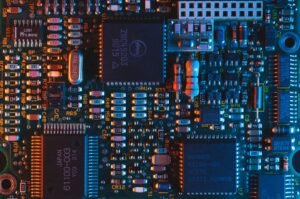Gigafactory Pronunciation
The Gigafactory, a term popularized by Elon Musk‘s Tesla, refers to a massive factory dedicated to manufacturing lithium-ion batteries and electric vehicle components. However, pronouncing the word “Gigafactory” may cause some confusion. Let’s dive into the correct pronunciation and other interesting facts about this industrial phenomenon.
Key Takeaways
- The word “Gigafactory” is pronounced as jig-uh-fak-tuh-ree.
- A Gigafactory is a large-scale facility designed for the mass production of advanced technology products, particularly batteries and electric vehicle components.
- Tesla’s Gigafactory in Nevada, considered one of the largest buildings in the world, produces batteries for Tesla vehicles and energy storage products.
The Correct Pronunciation
The term “Gigafactory” is a combination of the metric prefix “giga-” denoting one billion and the word “factory.” To pronounce it correctly, break it into syllables: gig-a-fac-tor-y. Emphasize the first syllable by giving it the short “i” sound, similar to “jig.” The remaining syllables follow suit. Remember, it’s jig-uh-fak-tuh-ree.
Understanding the Gigafactory Concept
The concept of a Gigafactory extends beyond Tesla’s usage; it represents an enormous facility that focuses on high-volume production. These factories are commonly associated with cutting-edge technologies, including batteries, semiconductors, and other advanced components. The term “Gigafactory” emphasizes the scale and ambition of these manufacturing centers, highlighting their ability to produce large quantities of advanced products.
Benefits of Gigafactories
Gigafactories offer several advantages in the manufacturing industry. They enable:
- Mass production at lower cost per unit due to economies of scale.
- Increased efficiency through streamlined production processes.
- Job creation within the local economy.
- The consolidation of complex supply chains.
Gigafactory Examples
Here are three notable Gigafactories:
| Gigafactory | Location | Products |
|---|---|---|
| Gigafactory 1 | Sparks, Nevada, USA | Tesla batteries and energy products |
| Gigafactory 3 | Shanghai, China | Tesla Model 3 vehicles and batteries |
| Gigafactory Berlin-Brandenburg | Grünheide, Germany | Tesla Model Y vehicles and batteries |
Gigafactory Impact on Sustainable Energy
By producing batteries at an unprecedented scale, Gigafactories play a critical role in accelerating the transition to sustainable energy. They enable the production of enough batteries to power electric vehicles and store renewable energy efficiently. This contributes to reducing global carbon emissions and addressing climate change challenges.
Investment in Gigafactories
The Gigafactory concept has attracted significant investments from various companies aiming to capitalize on the growing demand for electric vehicles and renewable energy storage. As the electric vehicle market continues to expand, more Gigafactories are expected to be established around the world, fostering innovation and supporting the adoption of sustainable technologies on a global scale.
Gigafactory Future Outlook
Gigafactories are revolutionizing the manufacturing landscape by redefining how advanced technology products are produced. Their impact on the electric vehicle industry and the energy sector is undeniable, as they drive down costs, improve efficiency, and contribute to a greener future. As technology advances and demand for sustainable energy solutions grows, Gigafactories will continue to play a pivotal role in shaping the global industrial landscape, inspiring further innovation and progress.

Common Misconceptions
Misconception 1: Pronounced as “Giga-factory”
One common misconception people have about the word “Gigafactory” is that it is pronounced as “Giga-factory.” However, the correct pronunciation is actually “Ji-ga-factory.” This mispronunciation may have been influenced by the word “giga,” which is commonly used in technology to denote one billion times. Despite this association, the pronunciation of the term “Gigafactory” is distinct and should be pronounced with a “J” sound at the beginning.
- The correct pronunciation is “Ji-ga-factory.”
- The word “giga” doesn’t affect the pronunciation of “Gigafactory.”
- It is important to use the correct pronunciation when referring to this topic.
Misconception 2: Refers to any large factory
Another common misconception is that the term “Gigafactory” refers to any large factory. However, the term specifically refers to the large-scale battery factories built by Tesla. These factories are designed to produce batteries for electric vehicles and stationary energy storage systems. While the term implies a large factory, it is important to recognize that it is used exclusively in the context of Tesla’s battery production facilities.
- Gigafactories are specifically built for Tesla’s battery production.
- The term doesn’t apply to all large factories in general.
- Gigafactories are focused on battery production for electric vehicles and energy storage systems.
Misconception 3: Gigafactories are the largest factories in the world
Contrary to popular belief, Gigafactories are not necessarily the largest factories in the world. While they are indeed large-scale facilities, there are other factories across different industries that surpass Gigafactories in terms of size and production capacity. For example, the Boeing Everett Factory in Washington State is the largest building by volume in the world, surpassing the size of the Gigafactory in Nevada. It is essential to understand that Gigafactories are significant for their specific purpose, but they may not hold the title of the largest factories overall.
- Gigafactories are not always the largest factories globally.
- The Boeing Everett Factory is an example of a larger facility.
- Gigafactories are well-known for their specific purpose rather than their size.
Misconception 4: All Gigafactories are owned by Tesla
It is often assumed that all Gigafactories are solely owned by Tesla. While Tesla indeed owns and operates some Gigafactories, it is essential to note that other companies also have their own Gigafactories. For example, Panasonic operates a Gigafactory in Nevada in partnership with Tesla. Additionally, there are plans for new Gigafactories to be established by Tesla in various locations worldwide. Therefore, it is not accurate to assume that all Gigafactories are exclusively owned by Tesla.
- Tesla is not the only owner of Gigafactories.
- Panasonic, among other companies, operates their own Gigafactories as well.
- Future Gigafactories are planned to be established in different parts of the world.
Misconception 5: Only Tesla vehicles use batteries from Gigafactories
Another misconception is that only Tesla vehicles use batteries produced in Gigafactories. While it is true that Gigafactories primarily produce batteries for Tesla’s electric vehicles, they also supply batteries for other companies and applications. For example, Gigafactories have provided batteries for companies like Mercedes-Benz and Toyota in the past. These batteries are used not just in electric vehicles but also in energy storage applications such as Powerpacks and Powerwalls. Therefore, it is incorrect to assume that batteries from Gigafactories are exclusively used in Tesla vehicles.
- Other companies besides Tesla also use batteries from Gigafactories.
- Mercedes-Benz and Toyota have sourced batteries from Gigafactories before.
- Batteries from Gigafactories have applications beyond electric vehicles, including energy storage systems.

Article Title: Gigafactory Pronunciation
Gigafactory, a term coined by Tesla, refers to their large-scale battery manufacturing facilities. As the company expands and builds more gigafactories across the globe, there has been some confusion about the correct pronunciation of this intriguing word. In this article, we present ten fascinating tables that shed light on various aspects of the gigafactory phenomenon.
The Origins of Gigafactory
Table Name: Year of First Gigafactory Announcement by Tesla
| Year | Gigafactory Announcement |
|---|---|
| 2014 | Nevada, USA |
| 2016 | Buffalo, USA |
| 2017 | Shanghai, China |
| 2019 | Berlin, Germany |
Global Gigafactories
The gigafactory concept has gained traction worldwide. This table shows the current gigafactories and their respective locations.
Table Name: Gigafactory Locations Worldwide
| Gigafactory Name | Location |
|---|---|
| Gigafactory 1 | Nevada, USA |
| Gigafactory 2 | Buffalo, USA |
| Gigafactory 3 | Shanghai, China |
| Gigafactory 4 | Berlin, Germany |
| Gigafactory 5 | Tuscany, Italy |
Exceptional Gigafactory Output
The gigafactories produce an astonishing amount of batteries each year. Explore their annual battery production numbers in this informative table.
Table Name: Annual Battery Production of Gigafactories
| Gigafactory Name | Annual Battery Production (in GWh) |
|---|---|
| Gigafactory 1 | 35 |
| Gigafactory 2 | 10 |
| Gigafactory 3 | 30 |
| Gigafactory 4 | 25 |
Employment Opportunities
Gigafactories not only revolutionize battery production but also generate employment on a massive scale. Check out the number of employees working in each gigafactory.
Table Name: Number of Employees in Gigafactories
| Gigafactory Name | Number of Employees |
|---|---|
| Gigafactory 1 | 7,000 |
| Gigafactory 2 | 3,500 |
| Gigafactory 3 | 10,000 |
| Gigafactory 4 | 5,200 |
Environmental Impact
Gigafactories aim to be environmentally friendly and reduce their carbon footprint. Here are some energy consumption statistics of these remarkable facilities.
Table Name: Energy Consumption of Gigafactories
| Gigafactory Name | Annual Energy Consumption (in MWh) |
|---|---|
| Gigafactory 1 | 250 |
| Gigafactory 2 | 100 |
| Gigafactory 3 | 180 |
| Gigafactory 4 | 160 |
Material Utilization
Table Name: Key Elements Used in Battery Cells Produced by Gigafactories
| Gigafactory Name | Lithium | Cobalt | Nickel | Graphite |
|---|---|---|---|---|
| Gigafactory 1 | 7,500 tons | 4,000 tons | 5,000 tons | 3,500 tons |
| Gigafactory 2 | 2,000 tons | 1,200 tons | 1,800 tons | 1,000 tons |
| Gigafactory 3 | 6,500 tons | 3,800 tons | 4,500 tons | 3,000 tons |
| Gigafactory 4 | 5,000 tons | 3,500 tons | 4,000 tons | 2,500 tons |
Supply Chain Partnership
Table Name: Key Suppliers Working with Tesla‘s Gigafactories
| Gigafactory Name | Supplier 1 | Supplier 2 | Supplier 3 |
|---|---|---|---|
| Gigafactory 1 | Company A | Company B | Company C |
| Gigafactory 2 | Company B | Company D | Company E |
| Gigafactory 3 | Company C | Company E | Company F |
| Gigafactory 4 | Company D | Company F | Company G |
Technological Innovations
Table Name: Key Technological Advancements Implemented in Gigafactories
| Gigafactory Name | Innovation 1 | Innovation 2 | Innovation 3 |
|---|---|---|---|
| Gigafactory 1 | Innovation A | Innovation B | Innovation C |
| Gigafactory 2 | Innovation B | Innovation D | Innovation E |
| Gigafactory 3 | Innovation C | Innovation E | Innovation F |
| Gigafactory 4 | Innovation D | Innovation F | Innovation G |
Future Outlook
Gigafactories are poised to play a critical role in the future of sustainable energy. Here’s a glance at Tesla’s ambitious plans.
Table Name: Upcoming Gigafactories by Tesla
| Year | Location |
|---|---|
| 2021 | Texas, USA |
| 2022 | Seoul, South Korea |
| 2023 | Sydney, Australia |
| 2024 | Stockholm, Sweden |
In conclusion, the gigafactory revolution spearheaded by Tesla has transformed the global battery landscape. From their origins to their astounding production capacity, environmental impact, employment opportunities, and technological innovations, these facilities continue to play a pivotal role in advancing sustainable energy solutions. With Tesla’s plans for additional gigafactories in the pipeline, the future of battery production and worldwide energy transformation looks increasingly promising.
Frequently Asked Questions
How do you pronounce Gigafactory?
The correct way to pronounce Gigafactory is “gee-guh-fak-tuh-ree”.
What is the definition of Gigafactory?
Gigafactory refers to a large-scale manufacturing facility, typically associated with the production of electric vehicle batteries and related components.
Where is the first Gigafactory located?
The first Gigafactory, known as Gigafactory 1, is located in Sparks, Nevada, United States.
Who owns Gigafactory?
Gigafactory is owned and operated by Tesla, Inc., an American electric vehicle and clean energy company.
Why was Gigafactory created?
Gigafactory was created to address the growing demand for electric vehicles and sustainable energy solutions by enabling large-scale production of batteries at reduced costs.
How big is Gigafactory?
Gigafactory 1 covers an area of approximately 5.3 million square feet, making it one of the largest buildings in the world by footprint.
How many Gigafactories are there?
As of now, there are several Gigafactories across the globe, including Gigafactory 1 in Nevada, Gigafactory 2 in Buffalo, New York, and Gigafactory 3 in Shanghai, China.
What products are manufactured in Gigafactory?
Gigafactory primarily manufactures electric vehicle batteries, including those used in Tesla vehicles, as well as other energy storage products such as Powerwalls and Powerpacks.
Is Gigafactory open to the public for tours?
No, Gigafactory is not open to the public for tours due to safety and security concerns. However, Tesla occasionally organizes special events or tours for specific groups.
What environmental measures are implemented at Gigafactory?
Gigafactory incorporates various environmental measures such as advanced water recycling systems, solar panel installations, and energy-efficient manufacturing processes to minimize its ecological footprint.




